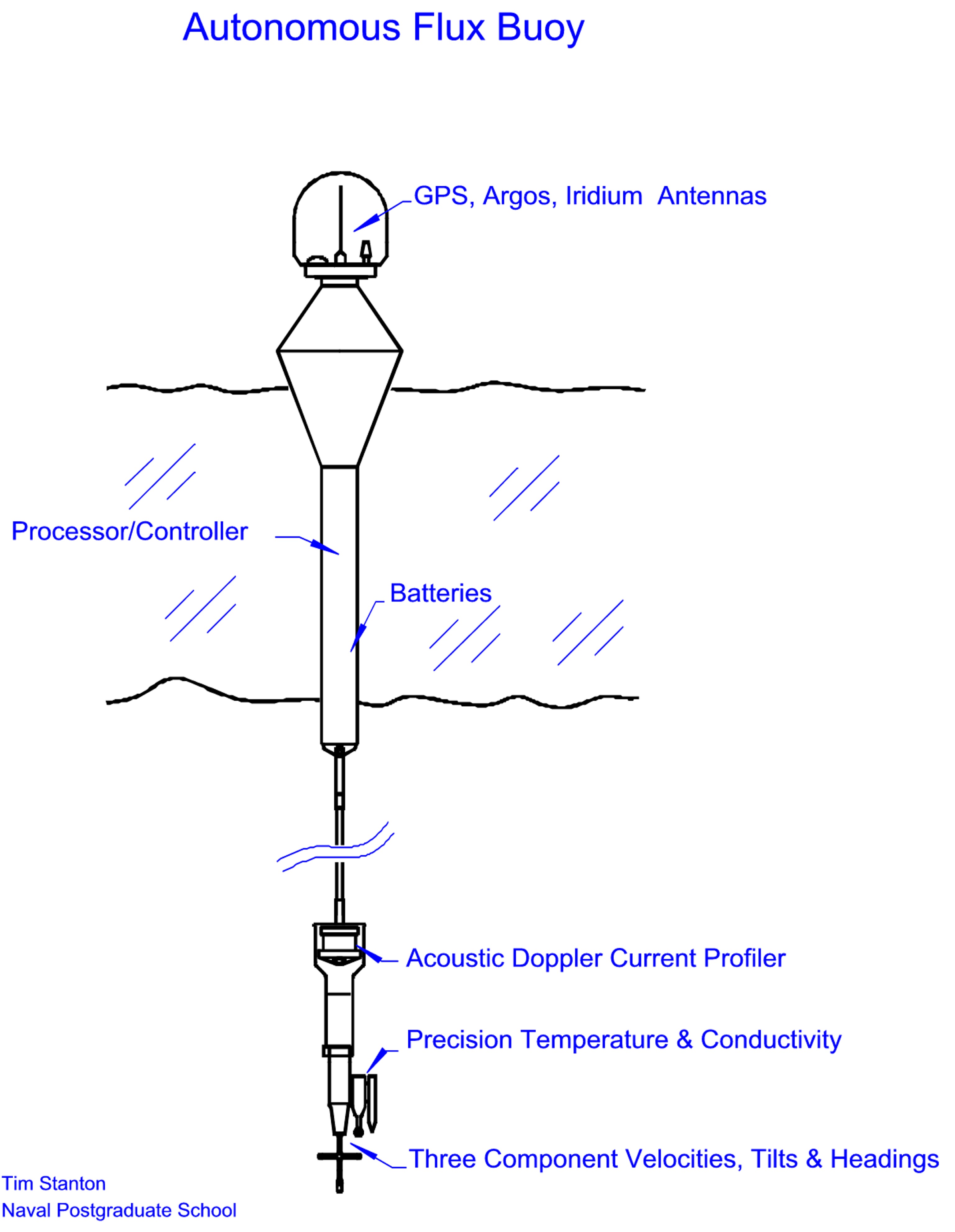Buoy TechnologyThe autonomous ocean flux buoy (AOFB) is a system for measuring turbulent fluxes in the upper ocean below sea ice custom designed and fabricated at the Naval Postgraduate School (NPS). Two main components comprise the AOFBs: a surface buoy that sits on the ice and an instrument package that is suspended into the upper ocean by a series of poles from the bottom of the surface buoy. The surface buoy contains processing electronics, GPS and Iridium antennae, and batteries The instrument package is outfitted with a downward looking 300 kHz Acoustic Doppler Current Profiler (ADCP, RDI Workhorse) and a custom-built ‘flux package’. Additionally, the buoys have GPS receivers for measuring position and calculating ice velocity. After installation in the field on selected ice floes, AOFBs maintain twice-daily, two-way communications with a computer running at NPS. An acoustic travel-time current meter (Falmouth Scientific Inc. (FSI), ACM 3D current meter), an inductive conductivity cell and platinum resistance thermometer (FSI, OEM C-T Sensor), and a fast-response thermistor comprise the suite of sensors on the flux package The three flux sensors are collocated within a 0.2-m3 sample volume and are designed to directly measure the turbulent fluxes of momentum, heat, and salt using the eddy-correlation technique. The sensors are "burst-sampled" over approximately 20-minute-long Reynolds averaging periods. For each averaging period, first- and second-order statistics are calculated onboard the buoy for velocity, temperature, and salt, including the covariance of vertical velocity with horizontal velocity, temperature, and salt. In addition to the first and second moments from the Reynolds averaging periods, spectra of fluctuating quantities, including the vertical velocity, are calculated onboard the buoy and are included in the data transmissions. |
